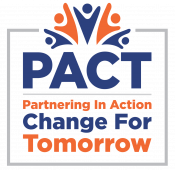College Drinking has become a ritual that students often see as an integral part of their higher education experience. According to a national survey, almost 53 percent of full-time college students ages 18 to 22 drank alcohol in the past month and about 33 percent engaged in binge drinking during that same time frame (NIAAA).
Ongoing research continues to improve our understanding of how to address the persistent and costly problem of harmful and underage student drinking. Successful efforts typically involve a mix of strategies that target individual students, the student body as a whole, and the broader college community [Source: National Institute on Alcoholism and Alcohol Abuse (NIAAA)]. The resources below provide an overview of effective environmental strategies and best practices known to help colleges assist young adults to make healthy decisions regarding alcohol consumption.
Campus Drug Prevention: Drug Enforcement Agency

The Drug Enforcement Administration (DEA) provides colleges and their surrounding communities with these resources to prevent drug misuse among college students. Their website promotes the importance of prevention and its role in helping ensure the health and safety of our nation’s colleges and universities. To learn more, click here.
CollegeAIM: Alcohol Intervention Matrix

Developed by the National Institute on Alcohol Abuse and Alcoholism (NIAAA) with leading college alcohol researchers and staff, CollegeAIM—the College Alcohol Intervention Matrix—is an easy-to-use and comprehensive booklet and website to help schools identify effective alcohol interventions. To learn more, click here.
College Drinking: Prevention Perspectives Episode 1-Lessons Learned at Frostburg State University
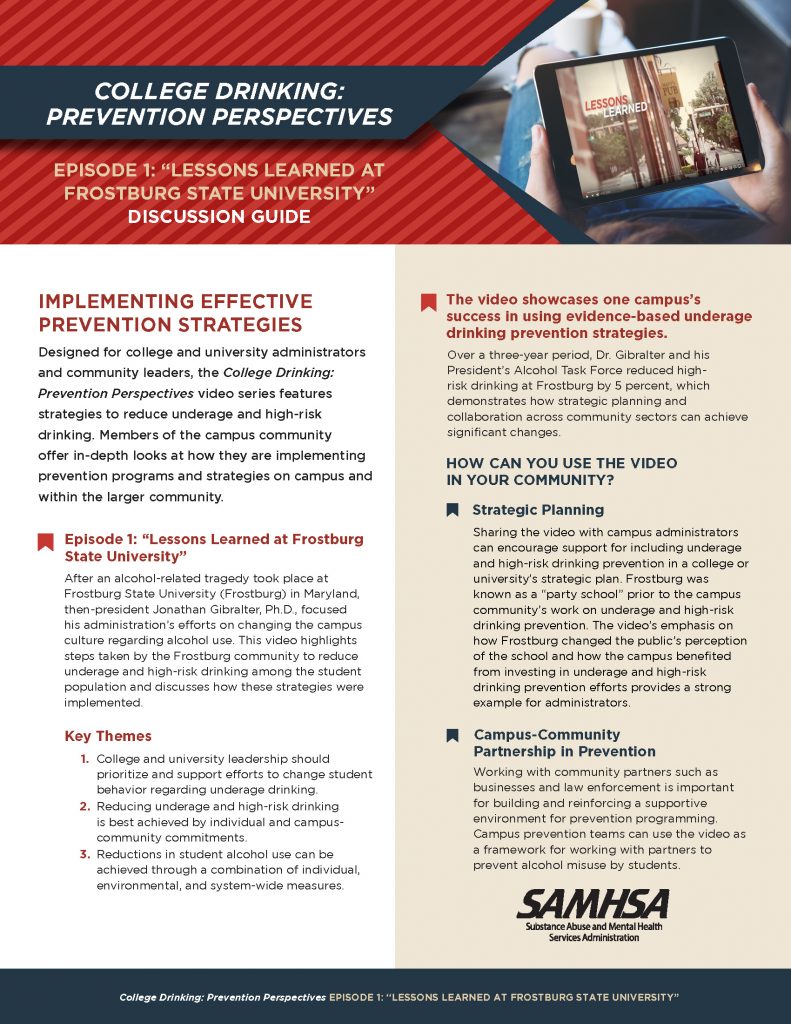
Frostburg State University established a culture of alcohol and health awareness that actively supports, educates and empowers students to make low-risk choices about alcohol consumption. FSU employed a comprehensive, environmental strategy utilizing prevention, engagement and deterrence to connect students and the university community with innovative, evidenced-based, student-centered alcohol awareness programs. Watch Episode 1 of SAMHSA’s latest resource and learn about the actions taken by Frostburg State University to reduce campus underage and harmful drinking. To view their video, click here; to learn more about its current on campus initiatives, click here; and to review their prevention strategies, click here.
College Drinking: Prevention Perspectives Episode 2-Embracing Culture and Context To Prevent Underage Drinking
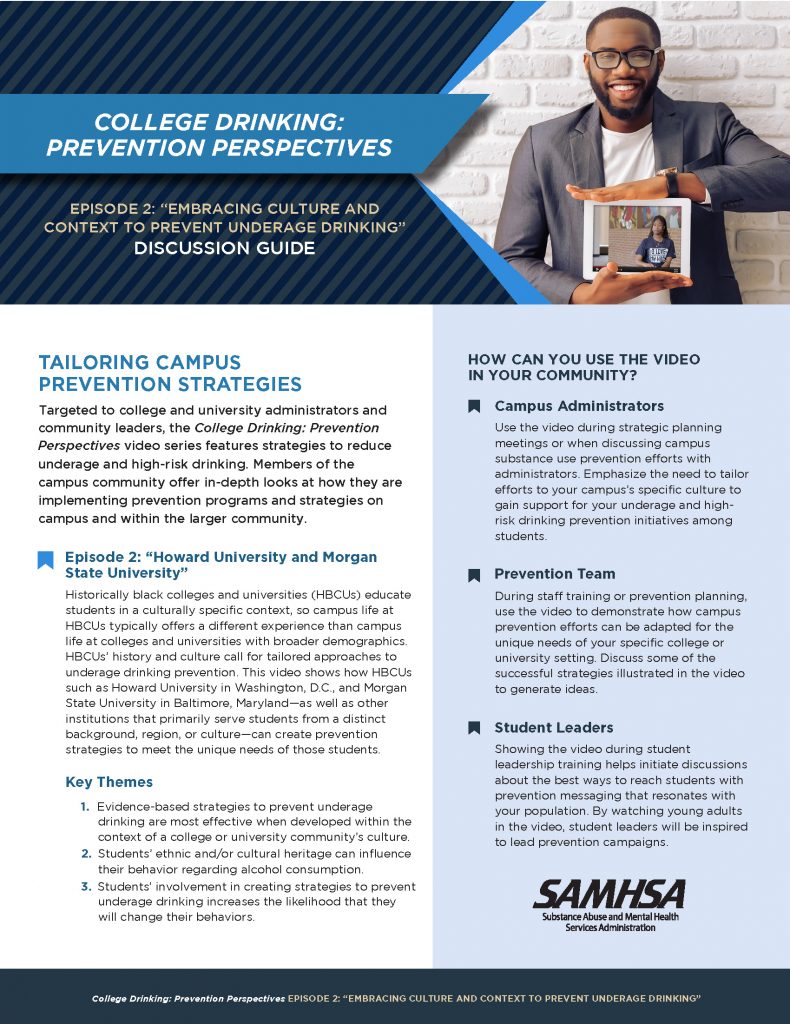
Historically black colleges and universities (HBCUs) educate students in a culturally specific context calling for a tailored approach to underage drinking prevention. This video, the second episode in SAMHSA’s College Drinking: Prevention Perspectives series, shows how HBCUs such as Howard University (Washington, D.C.) and Morgan State University (Baltimore, MD) created prevention strategies to meet the unique needs of a campus community with a strong history and culture. The College Drinking: Prevention Perspectives video highlights strategies and partnerships within the college and greater community to reduce underage and high-risk drinking. To learn more about how your campus can implement prevention programs and strategies on campus and within the larger community, click here.
Higher Education Center for Alcohol & Drug Misuse Prevention & Recovery

The Higher Education Center for Alcohol and Drug Misuse Prevention and Recovery (HECAOD) is an alcohol and drug misuse prevention and recovery resource for colleges and universities across the nation. HECAOD is a joint collaboration between The Ohio State University’s College of Social Work, College of Pharmacy, Office of Student Life, Generation Rx and the Collegiate Recovery Community. It’s Prevention 101, 5-part video series, explores the foundations of collegiate substance misuse prevention. It is designed for new prevention professionals. To view one or all of these brief modules, click here. To learn more about cultural or “environmental” changes that prevent or reduce substance misuse among college students and supports a healthy living and learning environment, click here.
The Maryland Cooperative to Reduce College Drinking and Related Problems
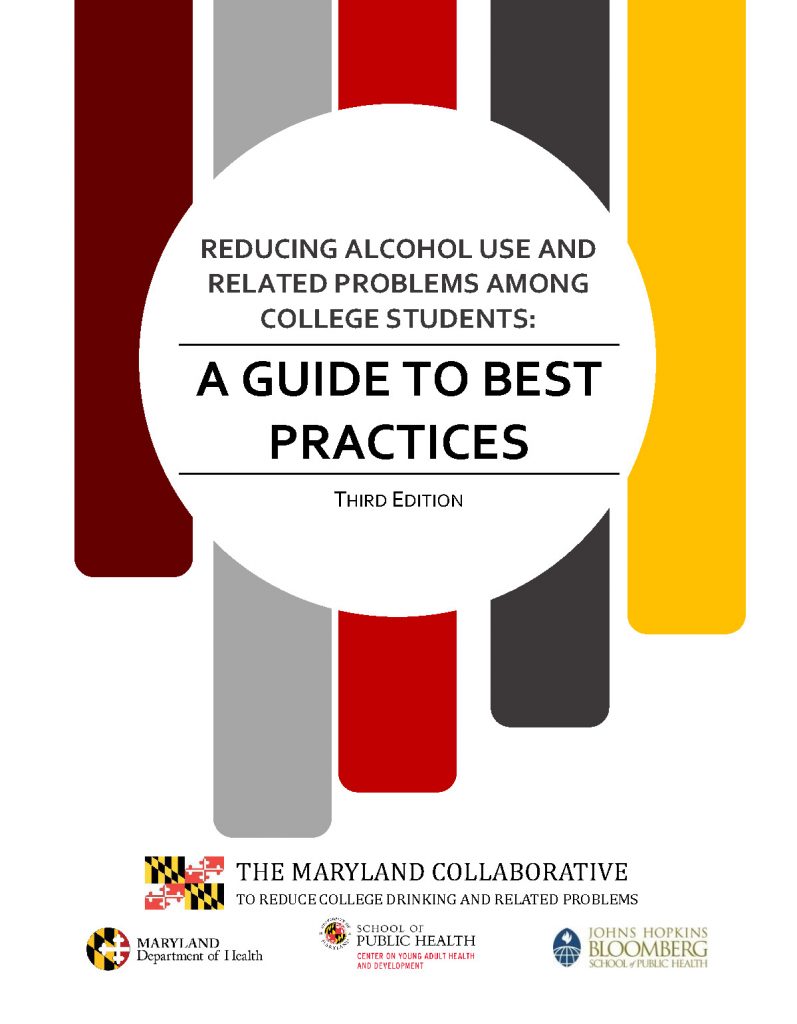
The Maryland Collaborative seeks to reduce excessive college drinking and resulting social and economic costs by raising awareness of college student drinking as a statewide public health problem and by helping college communities implement effective policies and practices to reduce the problem. To learn more about the Cooperative’s 3rd Edition of Best Practices, click here.
Safer Campuses and Communities
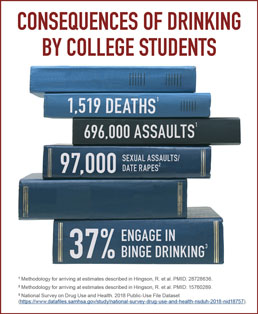
Safer Campuses and Communities (SCC) provides higher education campuses with the information needed to develop and implement research-based, proven interventions to change the culture of off-campus drinking and reduce levels of intoxication and related problems. The Safer Universities Program aims to reduce excessive drinking and intoxication at off-campus locations near the college, including parties at homes and apartments, as well as at nearby bars and restaurants. It achieves this by enhancing enforcement of laws to encourage responsible hosting and service of alcohol in private and commercial settings. Click here to access a Safer University Toolkit to support implementation.
Substance Abuse Prevention and Intervention: An Athletics Tool Kit
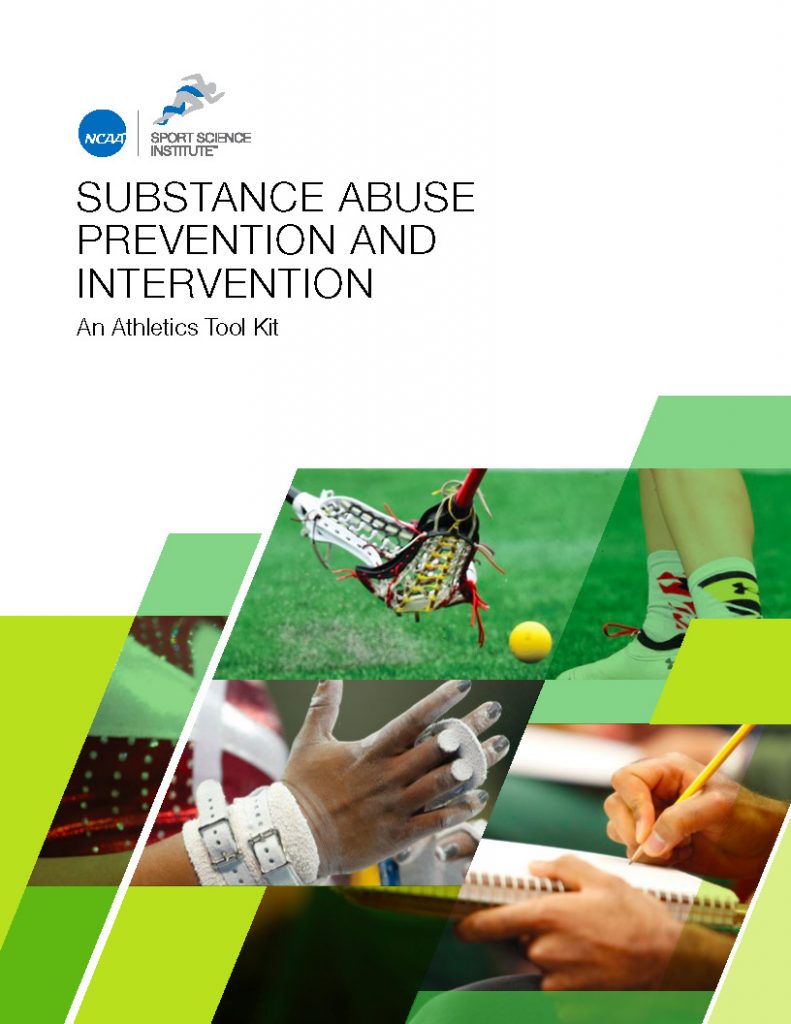
The National Collegiate Athletic Association Athletics Tool kit seeks to educate student-athletes about the risks associated with substance abuse. Guided by the latest prevention science and deterrence strategies, and with the collaboration of athletics stakeholders and substance abuse prevention experts, this tool kit is designed to support athletics administrators, in partnership with campus colleagues, reduce substance abuse and promote healthy choices that enhance athletic performance and lifelong health. To learn more, click here.
